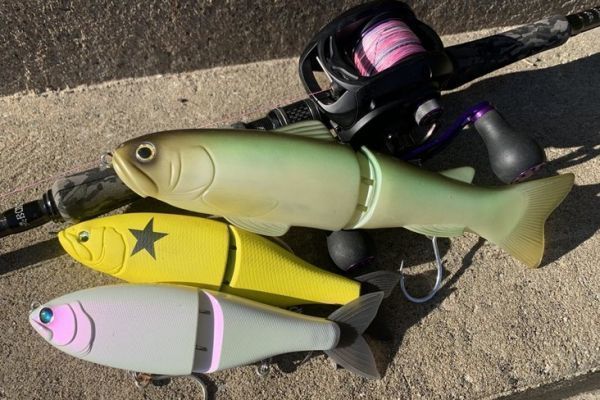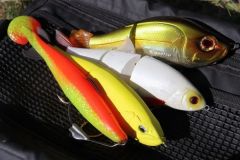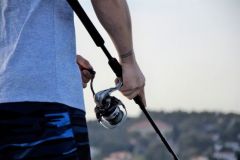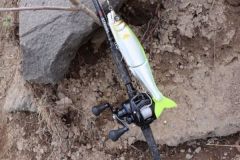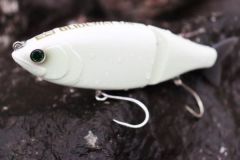Animating a glide-bait
Unlike many lures, which need to be animated with the rod, jerks or scions, glide-baits can only be handled with the reel. In fact, it's the retrieve speed and its variations that bring the lure to life.
From one model to another, they react in much the same way, and the two animations described below can be used to animate them all. In all cases, keep the rod low and don't let go of the reel crank.
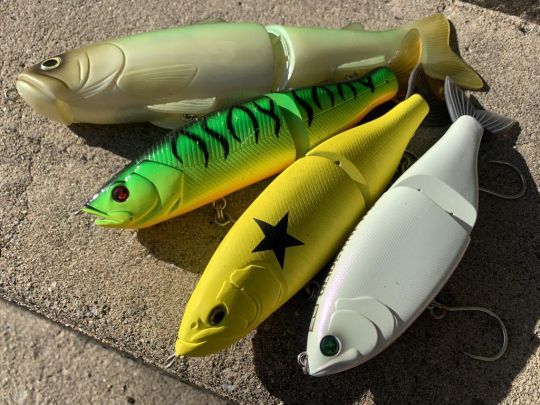
A constant speed
The easiest animation to execute when fishing with a glide-bait is to bring it back at a constant speed. This allows the lure to draw a rather elongated S shape as it swims. This animation allows you to vary the retrieve speed, which can be interesting if you want to explore an area, rather than insist on a specific spot. It's a very easy animation to execute, in which you can quickly gain confidence, and the touches are easily perceptible as they result in a sudden stop.
Stop and go
The other animation, which increases the amplitude of the lure's swimming action, allowing it to move from left to right in a more pronounced way, is the stop and go.
To execute this stroke, you need to make a quick half-turn of the crank and pause for a moment. This way, when you stop pulling back, the lure will continue to glide in the same direction. Once the lure has finished moving forward, simply crank again to send it off in the other direction, and so on.
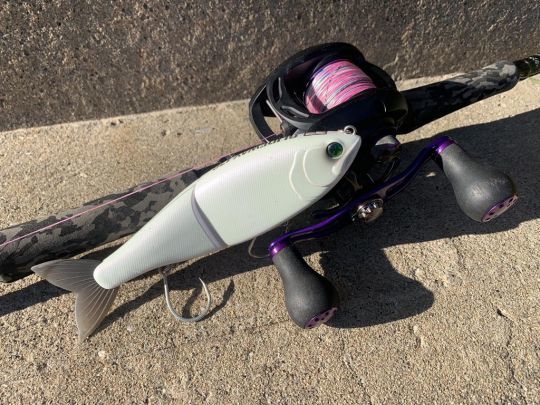
When brought back in this way, the glide-bait accentuates its swimming action and turns in a more amplified manner, almost 180 to one side, then the other, for some models.
Pike and black bass
For black bass, stop and go is clearly the preferred choice. For pike, both animations work well, although a constant-speed retrieve seems more effective in summer, while the stop-and-go is more likely to be used in winter.
The equipment
When it comes to equipment for glide-bait fishing, a casting kit is the way to go!
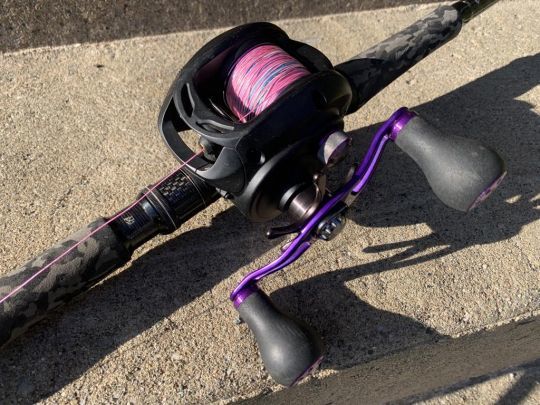
It allows you to fish comfortably with a low rod, to cast precisely the length of line needed to animate the lure as it should, and as the crank handle on casting reels is shorter, it's once again the comfort of execution that favours the use of this equipment.

 /
/ 